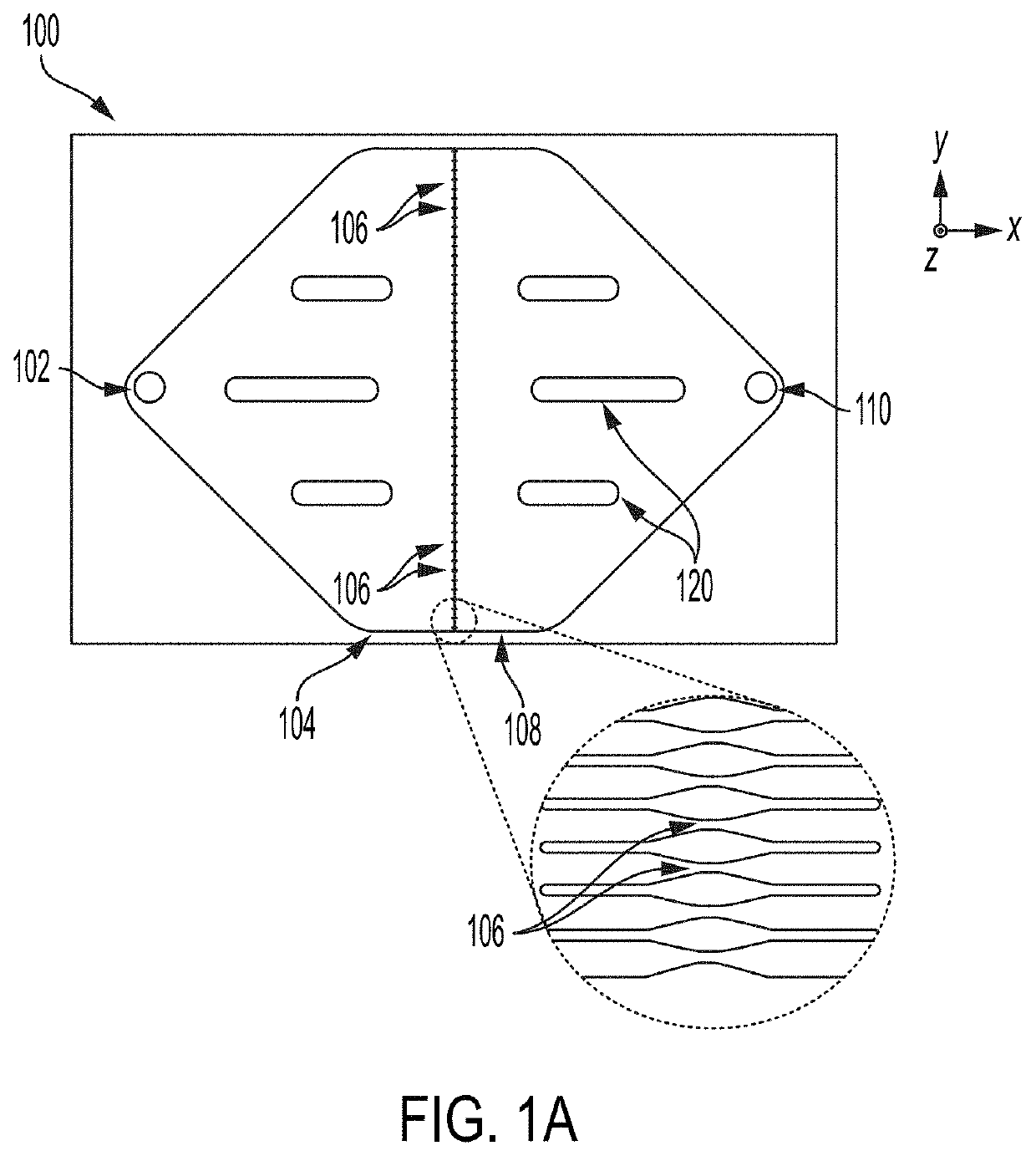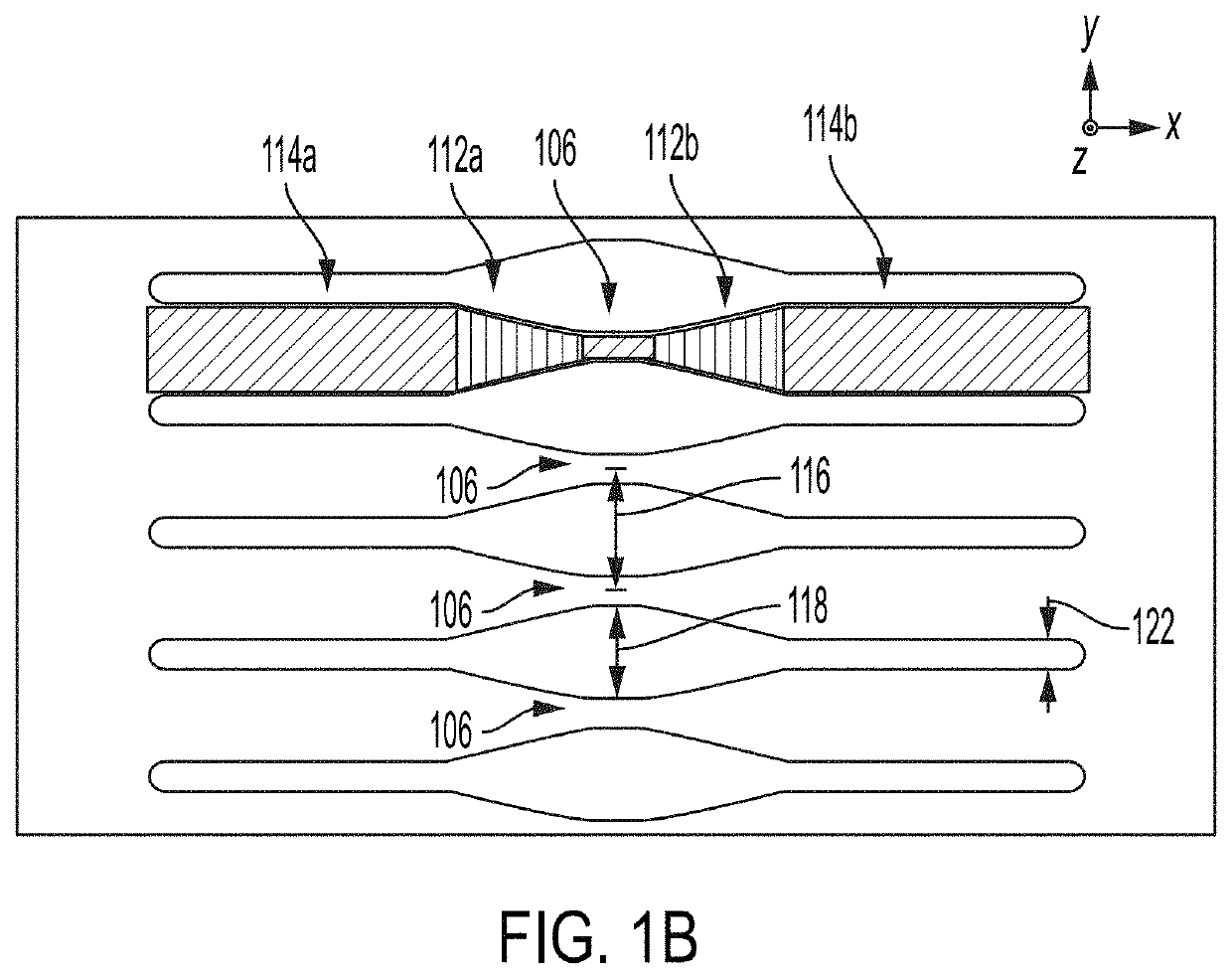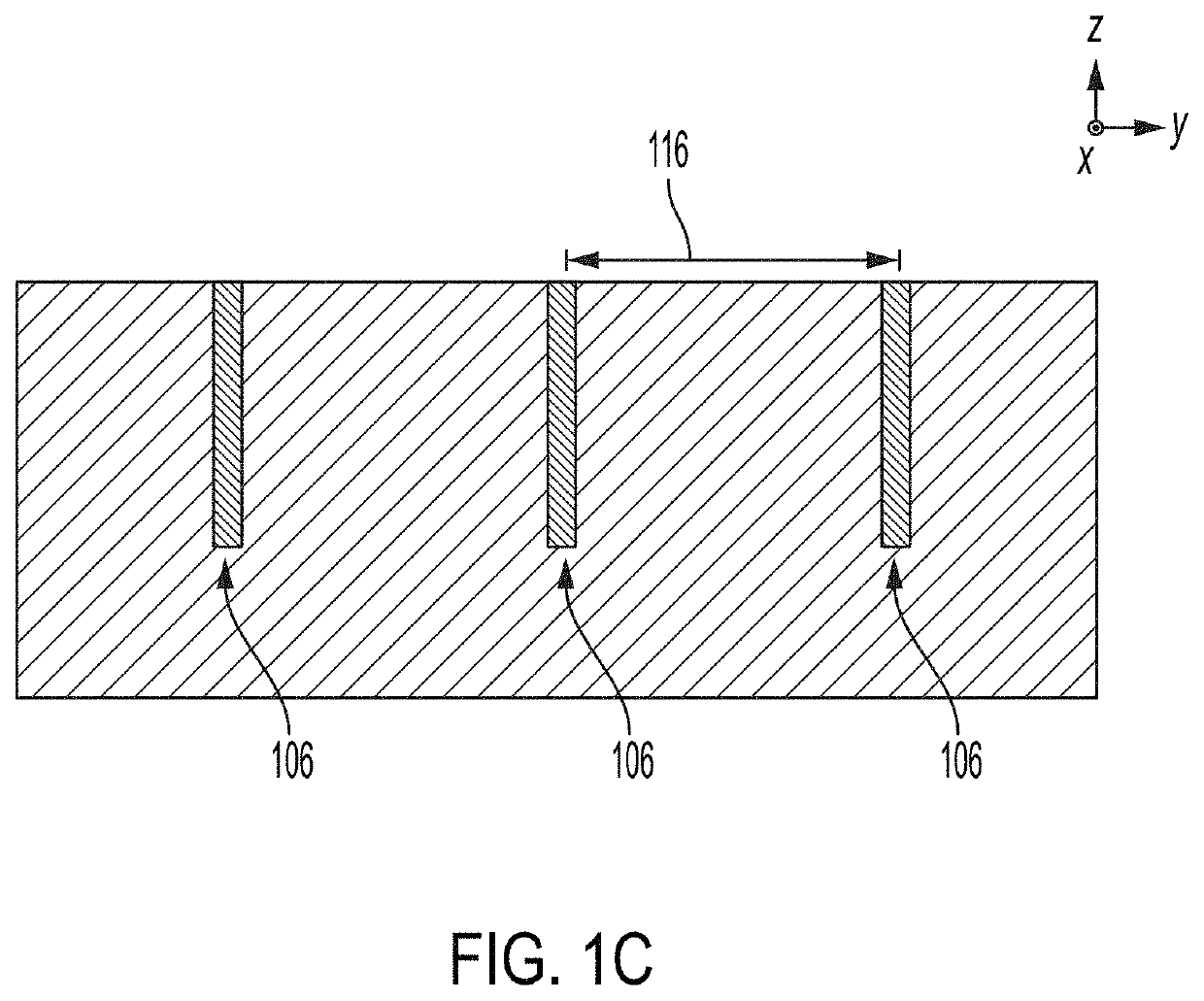High-throughput microfluidic chip having parallelized constrictions for perturbing cell membranes
a microfluidic chip and parallelization technology, applied in biochemistry apparatus and processes, laboratory glassware, tissue/virus culture apparatus, etc., can solve the problems of insufficient throughput rate, insufficient simple and efficient fabrication, and easy clogging of constrictions of known intracellular payload delivery systems
- Summary
- Abstract
- Description
- Claims
- Application Information
AI Technical Summary
Benefits of technology
Problems solved by technology
Method used
Image
Examples
example 1
[0148]Performance of different chips was compared, where constrictions of a first set of two chips in parallel were 4 μm in width, and constrictions of a second set of two chips in parallel were 4.5 μm in width. Each chip contained 75 constrictions arranged in parallel. For all chips, constriction length was 10 μm. For all chips, a pressure of 50 PSI and a temperature of 2-8° C. was used. For all chips, the blood product Hemacare LP was used at a concentration of 7.20×107 cells / mL. For all chips, a delivery media of RPMI and a delivery material of 0.01 mg·ML 3 kDa Dextran AF 680 was used.
[0149]Performance of the chips is shown in Table 1 below:
TABLE 1ChipNucleoCounter ®Live Cell RecoveryTotal LiveConstrictionNC-200 ™ ViabilityThrough 2 hourCells PassedWidthPost-Squeeze at T0Incubationthrough chips 4 μm72.4%43.6%2.88e94.5 μm79.6%64.5%3.96e9
example 2
[0150]Performance of a chip having 75 constrictions arranged in parallel, each constriction having a width of 4 μm and etch depth of 66 μm was tested. The chip performed a microfluidic squeeze under the following pressures: 40 PSI, 50 PSI, and 60 PSI. These three runs or “squeezes” were plotted against three control squeezes: Control 1 (chip with constrictions measuring 30 μm length, 4 μm width, and 20 μm depth tested at 60 PSI), Control 2 (addition of dextran to cell suspension with no microfluidic squeezing), Control 3: (no addition of dextran and no microfluidic squeezing), to show the percentage of live B cells, percentage of dextran delivery, and relative mean fluorescence intensity as shown in FIG. 11.
[0151]The graphs on the right in FIG. 11 are histograms showing fluorescence analysis of the uptake of dextran by cells under different conditions. The top three histograms represent squeezes under different pressures: 40 PSI, 50 PSI, and 60 PSI. “STD” represents squeeze conditio...
example 3
[0154]A chip was fabricated having 950 constrictions arranged in parallel, each constriction having a width of 4.5 μm, a length of 10 μm, and a etch depth of 80 μm. The overall size of the chip was 30 mm in length, 20 mm in width, and 1225 μm in height (thickness). The chip included an inlet fluidic port spaced 24 mm from an outlet fluidic port, each port having a diameter of 2.00 mm. The chip included a silicon substrate of 600 μm in height (thickness) and a glass top layer of 600 μm in thickness.
[0155]Target constriction dimensions for fabricating the chip were 4.50±0.20 μm for constriction width, 10±1 μm for constriction length, and 80±2 μm for constriction height (depth).
[0156]Specifications for fabricating the chip were as shown in Table 2 below:
TABLE 2SpecificationTargetMinMaxGlass wafer625600650thickness, μmSilicon wafer600575625thickness, μmTotal device122511751275thickness, μmConstriction width, μm4.504.304.70Variation in0−0.200.20constriction width, μmConstriction depth, μ...
PUM
| Property | Measurement | Unit |
|---|---|---|
| cross-sectional width | aaaaa | aaaaa |
| cross-sectional width | aaaaa | aaaaa |
| cross-sectional width | aaaaa | aaaaa |
Abstract
Description
Claims
Application Information
 Login to View More
Login to View More - R&D
- Intellectual Property
- Life Sciences
- Materials
- Tech Scout
- Unparalleled Data Quality
- Higher Quality Content
- 60% Fewer Hallucinations
Browse by: Latest US Patents, China's latest patents, Technical Efficacy Thesaurus, Application Domain, Technology Topic, Popular Technical Reports.
© 2025 PatSnap. All rights reserved.Legal|Privacy policy|Modern Slavery Act Transparency Statement|Sitemap|About US| Contact US: help@patsnap.com



